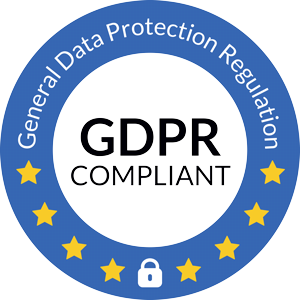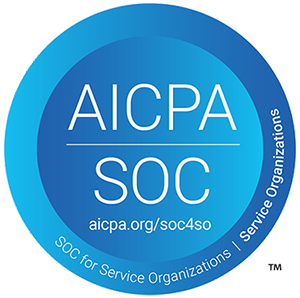In today’s recruitment and exam ecosystems, candidates no longer accept opaque, slow, or disjointed experiences. From screening to interviewing to exam proctoring, trust, transparency, and technology must be the foundation of every touchpoint. For Gen Z, and increasingly Gen Alpha, these aren’t optional features; they’re expectations.
This article explores how to design compelling candidate journeys for both hiring and certification, anchored in the triad of Trust + Transparency + Technology. Along the way, we’ll draw on hard data and emerging trends, showing how organizations can differentiate themselves through superior candidate experience.
Why Trust, Transparency & Tech Matter Now
The rising premium on trust
Edelman’s 2025 Trust Barometer demonstrates that while institutional trust is declining, businesses that adopt transparent practices continue to enjoy stronger confidence. When candidates feel that an employer or certification provider is honest about how decisions are made, expectations set, and data used, they’re more likely to stay engaged.
Young generations demand openness and value
Deloitte’s 2025 Gen Z & Millennial Survey reveals that these cohorts prioritize learning, well-being, purpose, and meaning, not just salary. They gravitate toward organizations that show ethical behavior, upskill investment, and clarity in processes. As Gen Alpha enters the scene, those expectations will only intensify.
Certification outcomes must prove their worth
In the 2025 “Value of IT Certification Candidate Report,” Pearson VUE states that 63% of certified professionals reported receiving promotions after certification, and 32% obtained salary increases. These results establish the tangible value of credentials, but only if the candidate experience supports them from booking to result.
Candidates lose patience when communication lags
In the 2025 Candidate Experience Report by Criteria Corp, a key insight is that many candidates equate silence with rejection, especially when unsure of timeline expectations. Simple updates at each stage reduce anxiety and drop-offs.
Scheduling friction is a real conversion cost
Although Calendly’s 2024 “State of Meetings” report doesn’t focus exclusively on hiring, it offers relevant insight: scheduling is painful when there’s back-and-forth, and younger respondents set firm boundaries around calendar time. In recruitment, those delays translate to candidate churn.
Architecting Trust in the Hiring Journey
Let’s walk through a candidate’s end-to-end journey in hiring—screen → assessment → interview → scheduling → offer, and how to infuse trust and clarity at each step.
Step 1: Application & screening
- Mobile-first & streamlined forms: Many candidates access job sites via mobile. Reducing steps, using smart defaults, and auto-population minimizes abandonment.
- What to expect show the map: A clear “stages & timeline” page (or banner) which lays out each phase, expected durations, and evaluation criteria.
- Consent & data usage disclosure: Before parsing resumes or gathering sensitive information, present concise, human-readable consent statements (for AI parsing, storage, third-party checks).
Step 2: Assigning assessments
- Transparent test previews: Show sample questions, formats, time limits, and scoring logic.
- Explain AI vs human review: If assessments are processed by algorithms, clarify which parts are human-reviewed, how reviews can be challenged, and what fairness safeguards are in place.
- Progress indicators: Let candidates see “assessment assigned,” “in progress,” “results pending” etc., rather than leaving them in limbo.
Step 3: Interviews
- Self-serve scheduling: Offer candidates a choice of slots based on interviewer availability. Reduce manual coordination and time-zone friction.
- Notifications & reminders: Send confirmations, calendar invites, reminders, and reschedule options proactively.
- Candidate prep guides: Share agendas, names, formats, and expectations in advance so candidates can prepare (and not feel ambushed).
Step 4: Decision & feedback
- “Decision by” timelines: Commit to deadlines (e.g. “You’ll hear from us by Friday”) and update if delays happen.
- Meaningful rejection feedback: Whenever possible, offer pointers or strengths - even if brief - to reinforce respect and trust.
- Referral or reapply options: If this role isn’t a fit, guide candidates to roles they might consider, rather than leaving them with “Not selected.”
Certification Experience: Booking to Results with Integrity
Candidate experience in certification mirrors hiring in complexity. Here’s how to layer trust, transparency, and tech from the certification journey:
Step 1: Discovery & registration
- Clear exam catalog & prerequisites: Show what the exam covers, sample tests, difficulty level, and prerequisites.
- Transparent pricing & fees: Always show the total cost (taxes, service charges) up front. High cart abandonment in certification often mirrors problems in e-commerce checkouts.
- Flexible payment options: Support local methods (e.g. UPI, cards, wallets) or installment options to cater to diverse geographies.
Step 2: Slot booking & scheduling
- Real-time slot availability & waitlists: Rather than static calendars, show live seat counts and allow candidates to join waitlists.
- Choice of modalities: Permit candidates to choose between remote proctoring or test centers, with clear trade-offs, pros and cons.
- Automated reminders and system checks: Send environment check instructions, browser compatibility, webcam/mic checks, and reminders well in advance.
Step 3: Proctoring & fairness
- Clear privacy policies: Spell out what is recorded, how long data is stored, when human review is triggered, and rights to appeal.
- Explain AI assist & human oversight: Disclose when AI alert systems are used (e.g. flagging suspicious behavior) and when human review intervenes.
- Live support & fallback options: Offer chat or helpline options in case the candidate faces technical issues mid-exam.
Step 4: Results & certification delivery
- “Results by” commitment: Give candidates a deadline for result delivery. Use status bars (“Grading in progress”) to reassure them.
- Outcome highlighting: Include analytics or insights (e.g. “You performed strongest in domain X”) to make results more actionable.
- Digital credentials & sharing: Enable easy sharing and embedding of certificates with verifiable links to prove authenticity.
Gen Z (and Gen Alpha Emerging) Expectations
Understanding younger cohorts is essential when designing candidate experiences:
- Expect transparency as a baseline: They assume processes are fair, and opacity is immediately suspicious.
- Demand control & autonomy: Scheduling, rebooking, communication preferences, and modality choices are non-negotiables.
- Judge by growth opportunities: They evaluate employers and certification bodies by how clearly they support upskilling, mentorship, and career paths (not just titles).
- Value fairness signals: Structured rubrics, published guidelines, appeals, and audit trails signal legitimacy and reduce anxiety.
If your process feels like a black box, you risk losing these cohorts early.
Metrics That Matter & How to Improve Them
| Metric | Meaning | How to Improve |
| Apply → Interview Conversion Rate | How many applications convert to interviews | Shorter forms, mobile optimization, preview of stages |
| Time to Schedule (days/hours) | Delay between assessment pass and interview scheduling | Self-serve slots, pooled interviewer availability |
| Candidate NPS / Resentment Rate | Do candidates recommend or resent the process? | Frequent updates, transparent decision windows, feedback loops |
| Exam Booking Abandonment Rate | Proportion who drop off before payment | Show fees upfront, reduce steps, support flexible payments |
| Time to Result (certification/hiring) | Duration between exam completion / final round and result | Publish grading SLAs, show progress, prioritize rapid processing |
Even small improvements compound, faster scheduling reduces drop-offs, better communication increases referrals, and transparency cuts support overhead.
Talview’s Guiding Principles to Embed Trust
To operationalize trust, transparency, and tech at scale, here’s a playbook:
-
Trust Center & Transparency Hub
Centralize policies on data use, AI models, appeals, retention, and auditability in a public “Trust Center.” Link it in every candidate email.
-
SLA Banners & Status Indicators
Show “We aim to notify by DD MMM” or “Exam results in 48 hrs.” Expose the current status in candidate dashboards.
-
Universal Self-Scheduling
For interviews and exam slots, expose self-serve booking. Automate timezone conversion, buffers, rescheduling, and reminders.
-
Explainable AI & Human-In-Loop Disclosure
Always disclose where AI is used (assessment scoring, monitoring) and ensure human review oversight and appeal paths.
-
Friction-free checkouts & booking flows
Keep exam registration and payment to 2–3 steps. Surface total cost and local payment methods upfront. Offer saved methods.
-
Outcome & Proof Marketing
Showcase success stories (promotions, salary uplift, new roles) from certification holders or hires to demonstrate real ROI.
-
Continuous feedback & iteration
Instrument candidate NPS, drop-off reasons, and support asks. Run monthly retrospectives to plug gaps and fine-tune flows.
Final Thoughts
Trust, transparency, and technology aren’t just buzzwords; they are the defining ingredients of modern candidate experience. For organizations that invest in these consistently across recruitment and certification, the payoff is higher engagement, lower churn, stronger brand, and a competitive edge in talent acquisition and credentialing.
You don’t need to be perfect from day one, but start with building blocks: commit to clarity, communicate early and often, and back promises with measurable technology. That’s how you win the confidence of Gen Z today and Gen Alpha tomorrow.
.jpg)






Leave a Reply